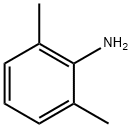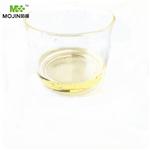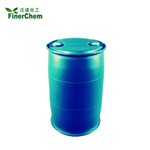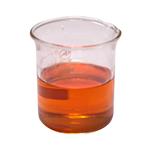Chemical Properties
clear yellow to red-brown liquid
Uses
2,6-Dimethylaniline is used in pharmaceuticals, as dye intermediates and in organic synthesis. It is also used in the production of antioxidants, agricultural, pharmaceutical, rubber chemicals and other target organic molecules.
Uses
Bupivacaine (B689560) impurity.
Definition
ChEBI: 2,6-dimethylaniline is a primary arylamine that is aniline in which the hydrogens at the 2- and 6-positions are replaced by methyl groups. It is used in the production of some anasthetics and other chemicals. It is a drug metabolite of lidocaine (local anasthetic). It has a role as a carcinogenic agent and a drug metabolite. It is a primary arylamine and a dimethylaniline.
Preparation
2,6-Dimethylaninile is prepared by nitration of xylene and reduction, followed by removal of the 2,4-isomer by formation of the acetate salt, removal of the 2,5-isomer by formation of the hydrochloride salt, and recovery of the 2,6-isomer by sublimation (US National Library of Medicine, 1992a).
2,6-Dimethylaniline is produced by one company each in Japan, Switzerland and the USA and by three companies in Germany (Chemical Information Servces, 1991).
Synthesis Reference(s)
Journal of the American Chemical Society, 92, p. 7464, 1970
DOI: 10.1021/ja00728a038The Journal of Organic Chemistry, 37, p. 3570, 1972
General Description
A liquid. Toxic by ingestion, inhalation and skin absorption. Slightly soluble in water. Used in pharmaceuticals, as dye intermediates and organic syntheses.
Air & Water Reactions
Slightly soluble in water.
Reactivity Profile
2,6-Dimethylaniline reacts with strong oxidizing agents [Handling Chemicals Safely 1980 p. 964]. Neutralizes acids in exothermic reactions to form salts plus water. May be incompatible with isocyanates, halogenated organics, peroxides, phenols (acidic), epoxides, anhydrides, and acid halides. Flammable gaseous hydrogen may be generated in combination with strong reducing agents, such as hydrides.
Health Hazard
May be fatal if inhaled, swallowed or absorbed through skin. Vapor or mist irritating to the eyes, mucous membranes and upper respiratory tract; causes skin irritation. Absorption into body leads to the formation of methemoglobin which, in sufficient concentration, may cause cyanosis. Onset may be delayed 2-4 hours or longer. Exposure can cause nausea, dizziness, headache, damage to the eyes, and blood effects.
Fire Hazard
Special Hazards of Combustion Products: Container explosion may occur under fire conditions. Emits toxic fumes under fire conditions.
Safety Profile
Suspected carcinogen.
Moderately toxic by ingestion. Mutation data
reported. Questionable carcinogen with
experimental carcinogenic data. When
heated to decomposition it emits toxic
fumes of NOx. See also other xylidme
entries.
Purification Methods
Convert vic-xylidine to a derivative (see below) which, after recrystallisation, is decomposed with alkali to give the free base. Dry it over KOH and fractionally distil. The acetyl derivative has m 177o, the benzoyl derivative has m 168o, and the picrate has m 180o. [Beilstein 12 H 1107, 12 IV 2521.]
Toxics Screening Level
The ambient annual concentration of 2,6 xylidine associated with a lifetime
incremental risk of 1 x 10- 6 (one in one million) is 0.78 119/m 3.






